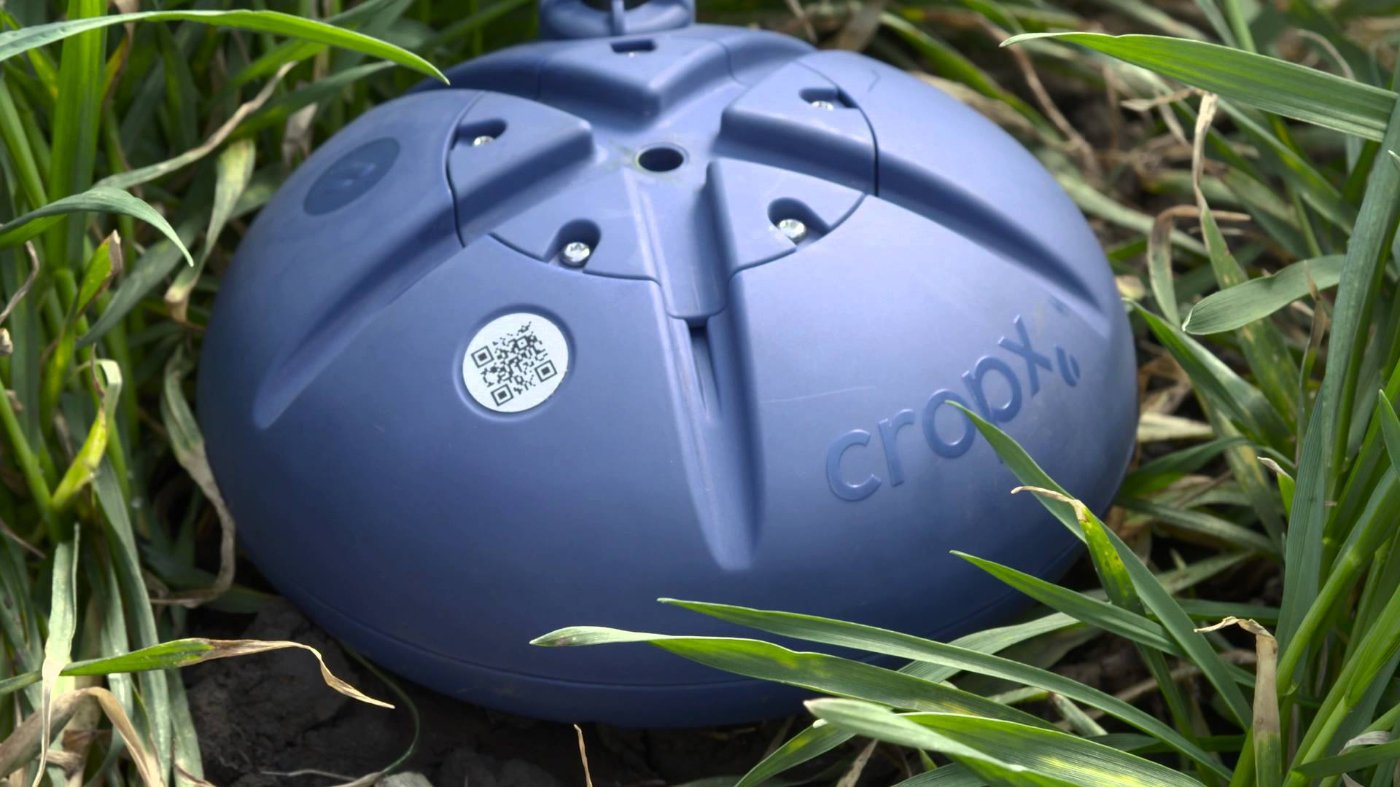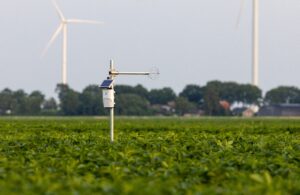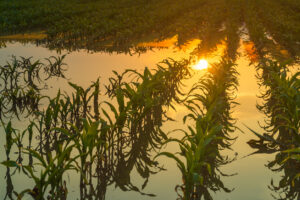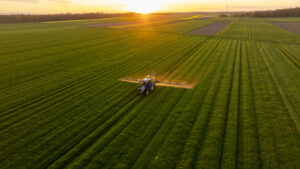The soil is a very complex environment. To help farmers get a better understanding of the soil, Dacom has introduced the CropX soil moisture sensor. An affordable and reliable instrument, especially useful when making irrigation choices. “With the current fuel and fertilizer prices, that is extra valuable.”
Soil moisture, soil temperature and electrical conductivity: these are the three things that the CropX soil moisture sensor measures. The sensor gives an agricultural entrepreneur a lot of insight into the current condition of the soil. “The sensor measures at two different depths, at 20 and 46 centimeters in the ground,” explains Wiert Wiertsema, accountmanager at Dacom. “This allows you to see what the situation is like at the top of the ground, but also in a deeper layer. And to what extent there is capillary rise.”
Nutrient availability
The moisture content in the soil is the basis for irrigation decisions. This way, farmers can avoid drought stress and thus yield loss. “The temperature also provides a good indication. Especially if you want to compare the crop development between seasons. It also provides insight during the spring when the soil can be worked. Many farmers often decide on instinct. Now they can substantiate this with figures.” According to Wiertsema, the same applies to the availability of nutrients in the soil. “The electrical conductivity is a way to gain insight into this. As a farmer, you can see sooner when additional fertilization is needed.”
This makes the CropX soil moisture sensor an interesting instrument from which a lot of information can be obtained. The data is made transparent via the systems of Dacom and CropX. The companies have been working closely together since the summer of 2021. CropX is originally an Israeli company with a solid foundation in irrigation advice based on its own soil moisture sensor. This happens worldwide, from New Zealand to South America. With the acquisition of Dacom, the equipment is now also readily available for the European market.

Reliable data
“The advantage is that there are already more than 10,000 CropX soil moisture sensors in the field worldwide,” says Wiertsema. “The sensor has proven itself and the reliability of the data is very high.” This means that the sensor is not inferior to the TerraSen, Dacom’s soil moisture station. The CropX soil moisture sensor is slightly simpler and financially more attractive to purchase. “You can have the sensor on your field for a few hundred euros.”
“It is more expensive to refuel a tractor with diesel and to irrigate unnecessarily,” continues Wiertsema.
“With the current fuel prices, you’ll think twice before switching on the reel. The sensor offers an extra tool to determine what you should do. Is irrigation really necessary and if so, how much? If the water instantly washes away to deeper layers, a lot of irrigating is not useful.”
Better substantiated decisions
In the Netherlands, the CropX soil moisture sensor is now being used in several fields. This mainly concerns crops that are irrigated a lot, such as potatoes, onions, carrots and flower bulbs. Wiertsema: “The use of the sensor is also interesting for trial fields, where an above-average amount of energy is invested in the crop. It helps to better interpret the results at the end of the season. The sensor is also very useful for farmers with fields on a distance. This way they can monitor what is happening in the soil. Ultimately, that’s what it’s all about: letting farmers make more informed decisions.”




